#brian skerry
Text
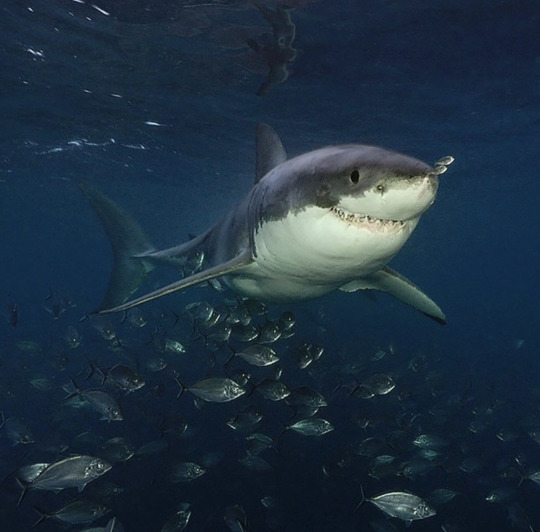
#i love him#just happy guy#natgeo#Brian skerry#nature#photography#shark#sharks#great white shark#ocean#sea#underwater#water#blue#fish#1k
1K notes
·
View notes
Text

A Great Hammerhead Shark glides through the warm, sunlit waters of The Bahamas.
Photo by @BrianSkerry.
20 notes
·
View notes
Text



yeah, i go to shows: national geographic live edition
kleinhans music hall
february 28, 2023 // 6:59 \ 8:33 \ 8:47 PM
click for higher resolution ;)
#aesthetic#photography#brian skerry#secrets of the whales#national geographic#national geographic live#nat geo#nat geo live#kleinhans music hall#kleinhans#yeah i go to shows#presentation#feb23#february#feb 2023
2 notes
·
View notes
Text

Ocean Conservation Research - OCR
Photographer & diver Brian Skerry beside the magnificently massive southern right whale.
There's an estimated 12,000 southern right whales spread throughout the southern hemisphere. They have started to recover from centuries of commercial hunting, unlike their endangered cousins in the Northern hemisphere. Right whales were named by whalers who identified them as the "right" whale to hunt, because they floated when they were killed.
North Atlantic right whales are one of the most endangered large whale species in the world, and the biggest threats they face are large ships and fishing gear, which can cause collisions and severe entanglement-related injuries, and ocean noise pollution.
94 notes
·
View notes
Text

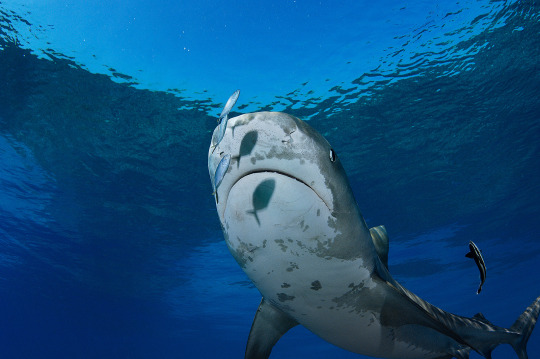

Taming the Tiger Shark
The tiger shark (Galeocerdo cuvier) is a common sight for divers, fishermen, and tourists in the tropical waters of the Atlantic and Pacific oceans. They are often found around sea grass fields or coral reefs, and tend to prefer warm, shallower waters near the coastline or surrounding atolls and islands. The northern end of their range extends up to the northern borders of the United States and China, while their southern range reaches down to Brazil, Madagascar, and the eastern coast of Australia.
While they're slightly smaller than great whites, G. cuvier is still one of the largest carnivores in the ocean. Adults can grow up to 4.7 m (15 ft 5 in) long and weigh between 300 and 900 kg (700 and 2,000 lb). Females tend to be larger than males, but the two sexes are otherwise indistinguishable. Individuals are typically bluish gray or green, with a white or light yellow underbelly; this provides them with camouflage, as fish swimming overhead or below are unable to pick out the shark's silhouette against the dark or light background, respectively.
As an apex predator, G. cuvier has few predators of its own. Juvenile tiger sharks will often fall prey to other sharks, including adults of their own species. Orcas are also occasionally known to prey on tiger sharks, but these occurrences are rare. In their own food chain, G. cuvier has a large appetite and will eat almost anything. Coral reef fish are a common target, though their speed and small size makes them harder to catch. More often tiger sharks will prey on cephalopods, crustaceans, sea snakes, turtles, sea birds, and a host of marine mammals like dolphins, dugongs, sea lions, and young, injured, or dead whales. Inadvertently, tiger sharks will also consume garbage such as bottles tires, earning them the nickname 'The Garbage Can of the Ocean'.
Tiger sharks are primarily active at night. Contrary to other sharks, G. cuvier has excellent eyesight, as well as a keen sense of smell. In addition, tiger sharks have two special sensory organs. The lateral line extends down the length of the body and can detect minute vibrations in the water. Ampullae of Lorenzini are small electroreceptors located on the snout; these detect the weak electrical impulses generated by prey. All these features make it easy for tiger sharks to find a meal, and once located their body shape allows them to put on a burst of speed and make quick turns to catch their target. Most of the time, this hunting practice is done alone, but occasionally groups of tiger sharks will gather to scavenge a large carcass or for the mating season.
Male tiger sharks mate every year, while females only reproduce every three years. Breeding seasons differ based on location; in the Northern Hemisphere mating occurs between March and May, while in the Southern Hemisphere it's between November and January. During this time, dozens or even hundreds of sharks may gather to find mates. Females carry their young for up to 16 months, at which time they give live birth. Tiger sharks are ovoviviparous, meaning that eggs are fertilised and hatch inside the mother; this species is also unique in that they employ a technique called embryotrophy, in which young gestate in sacks which are filled with an embryonic fluid. A single litter of tiger sharks may contain between 10 to 80 pups, and each one may live up to 12 years in the wild.
Conservation status: The IUCN has classified the tiger shark as Near Threatened. While exact numbers are unclear, a great many tiger sharks are killed each year for their skin, fins, and liver. This species also has a reputation for vicious attacks, and while they can be aggressive when threatened, only a handful of shark attacks occur each year.
If you like what I do, consider leaving a tip or buying me a ko-fi!
Photos
Neil Hammerschlag
Brian Skerry
David Snyder
#tiger shark#Carcharhiniformes#Galeocerdonidae#ground sharks#sharks#cartilaginous fish#fish#marine fauna#marine fish#coral reefs#coral reef fish#coasts#coastal fish#atlantic ocean#Pacific Ocean#indian ocean#indo pacific#animal facts#biology#zoology
95 notes
·
View notes
Text

Photographer & diver Brian Skerry beside the magnificently massive southern right whale.
There's an estimated 12,000 southern right whales spread throughout the southern hemisphere. They have started to recover from centuries of commercial hunting, unlike their endangered cousins in the Northern hemisphere. Right whales were named by whalers who identified them as the "right" whale to hunt, because they floated when they were killed.
North Atlantic right whales are one of the most endangered large whale species in the world, and the biggest threats they face are large ships and fishing gear, which can cause collisions and severe entanglement-related injuries, and ocean noise pollution.
Source: Ocean Conservation Research
64 notes
·
View notes
Photo

By Brian Skerry
72 notes
·
View notes
Photo
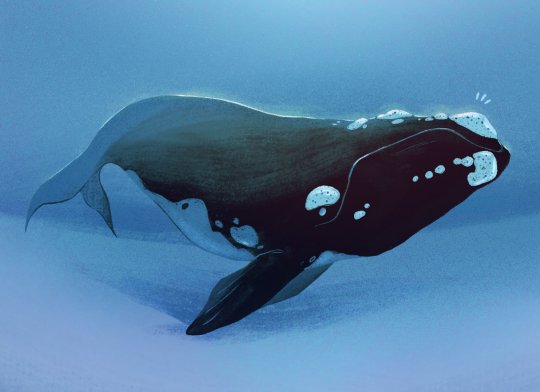
right whale study 🐳 based off a photograph by brian skerry
online store | twitter | instagram | portfolio
42 notes
·
View notes
Text
Right Whale vs. Sperm Whale
The right whale got its name from early Nantucket whalers, who deemed them the correct or right whales to hunt. It was a surface feeder, tended to be nonagrassive when harpooned, and had a high blubber content, which caused them to float when killed. These leviathans had enormous value for their plentiful oil and baleen, which were used for corsets, buggy whips, and other contrivances.
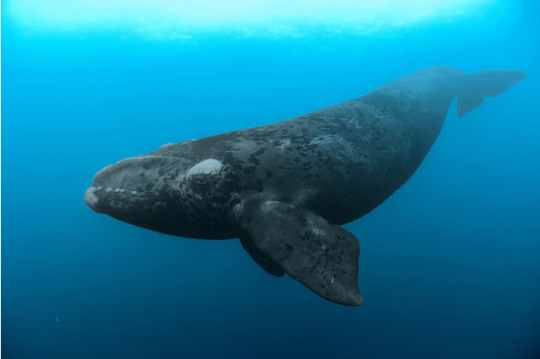
A southern right whale in waters off the Auckland Islands, by Brian J. Skerry (x)
The sperm whale was a different matter altogether. They have a teeth instead of baleen, are the deepest diving whales and ornery to boot, often turning on their attackers, smashing whaleboats with their tails or crushing them in their massive jaws. One even rammed the and sank the Nantucket Whaler Essex ( the original of Moby Dick) in November 1820.

A sperm whale. Their heads are filled with a mysterious substance called spermaceti. Scientists have yet to understand its function, but believe it may help the animal regulate its buoyancy, by Flip Nicklin (x)
Considering the danger associated with sperm whales, why are they the most sought after by the whaling fleets ? The higher quality sperm whale oil produced a brighter, cleaner flame compared to other whales, while the upper portion of its huge head (called the case) contained a huge reservoir of even finer quality oil. The case oil, once exposed to air, resembeles seminal fluid, which is where the name spermaceti or sperm whale is said to have originated.
73 notes
·
View notes
Text
The photographer I chose was Brian Skerry. He is a photographer who specializes in marine life and ocean environments. I chose him because I watch a lot of marine animal documentaries in my free time and I enjoy going to aquariums. He’s able to show the beautiful and the fragile/dark parts of marine environments by raising awareness about marine conservation issues, which would be hard to see without the help of his photography.


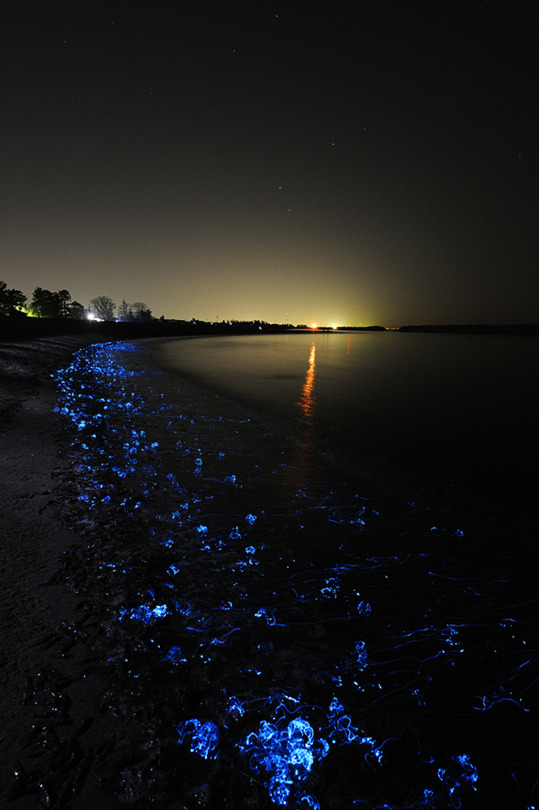
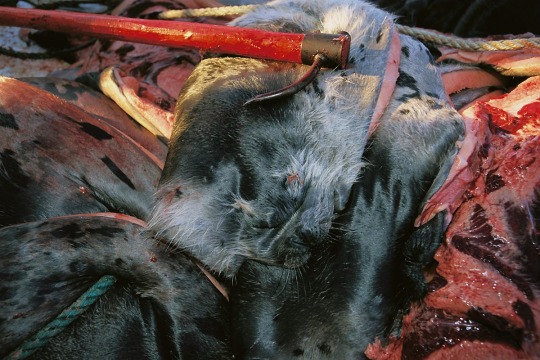

1 note
·
View note
Text

Flipper? A Dusky Dolphin (Lagenorhynchus Obscurus) leaps out of the water off New Zealand. Photograph By Flip Nicklin, National Geographic Image Collection

Bounding Buddies! Two Eastern Gray Kangaroos (Macropus Giganteus) jump through Australia’s Murramarang National Park. Photograph By Frans Lanting, National Geographic Image Collection

Nine Weather Up Here! A Manta Ray (Manta) Soars Over the Ocean’s Surface. Photograph By Brian J. Skerry, National Geographic Image Collection

Got Ya! An Arctic Fox (Vulpes Lagopus) Pounces on Potential Dinner Under the Snow in Alaska’s North Slope. Photograph By Design Pics Inc., National Geographic Image Collection

Leaping Through The Fields! A Springbok (Antidorcas Marsupialis) springs into the air while running in Africa. Photograph By Ralph Lee Hopkins, National Geographic Image Collection

Out of Our Way! Blue Wildebeest (Connochaetes Taurinus) bound into the Mara River as they migrate through Kenya’s Masai Mara National Reserve. Photograph By Suzie Eszterhas, National Geographic Image Collection

There It Is! A Red Fox (Vulpes Vulpes) pounces on prey burrowed under the snow. Photograph By Robbie George, National Geographic Image Collection
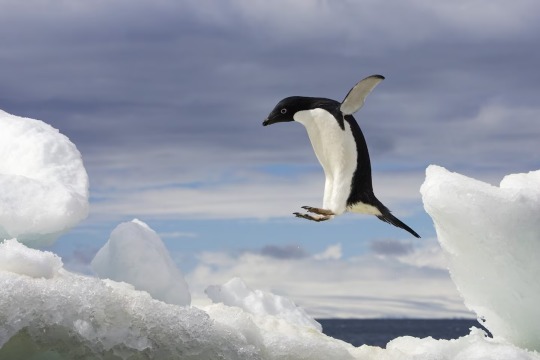
Ice, Ice, Baby! An Adélie Penguin (Pygoscelis Adeliae) jumps on an iceberg in Antarctica. Photograph By Ralph Lee Hopkins, National Geographic image collection

Snowy Goat! A Mountain Goat (Oreamnos Americanus) leaps through snow at Glacier National Park in the Rocky Mountains of Montana. Photograph By Sumio Harada, National Geographic Image Collection
0 notes
Text

Sand Tiger sharks arrive in July to give birth in the warm waters of the Ogasawara Island, Japan. Here a mature female swims calmly over shallow coral near Muko-jima Island.
By Brian Skerry
#brian skerry#photographer#sand tiger shark#shark#marine life#ogasawara island#japan#coral#muko-jima island#nature
9 notes
·
View notes
Text
Book/Photographer research #7
Brian Skerry is a highly accomplished photojournalist and film producer who specializes in capturing stunning images of marine wildlife and underwater environments. Since 1998, he has been working as a contract photographer for National Geographic Magazine, covering a wide range of stories on every continent and in various ocean habitats. His exceptional work has earned him numerous accolades and recognition within the industry. In 2014, Brian was honored as a National Geographic Photography Fellow, followed by being named a National Geographic Society Storytelling Fellow in 2017. The same year, he was awarded the prestigious title of Rolex National Geographic Explorer of the Year. Throughout his career, Brian has contributed to multiple cover stories for National Geographic Magazine, both in the United States and internationally. Notably, he produced groundbreaking images of a sitting US President underwater during his coverage of the story "Saving Our Oceans."
Brian's work extends beyond National Geographic, as his photographs have been featured in renowned publications such as The New York Times, The Washington Post, Paris Match, Esquire, and Audubon. He has authored 12 books, including highly acclaimed monographs like "Ocean Soul" and "Shark." His latest book, "Secrets of the Whales," was released in April 2021 by National Geographic as part of a comprehensive project that includes a cover story in the magazine and a 4-part documentary film series available on Disney+, which received the prestigious 2021 Primetime Emmy Award for Outstanding Documentary.
Brian Skerry's talent and dedication have been recognized through numerous awards and honors. He is an 11-time recipient of the Wildlife Photographer of the Year competition, a distinction held in high regard. Additionally, he has received awards from Pictures of the Year International, Nature's Best, and Communication Arts. Brian is the sole photographer to have received the esteemed Peter Benchley Award for Excellence in Media. In 2010, one of his images was included in National Geographic magazine's list of the 50 Greatest Photographs Of All Time. Furthermore, in 2016, he was bestowed with the National Geographic Photographer's Photographer Award, a prestigious recognition from his peers and fellow National Geographic photographers.
Brian Skerry was one of my favorite photographers to research and learn about. As someone who loves nature and the ocean, his photography was very interesting to me. One of the things I loved most about his work was that he did not stick to the surface. He went into the deep parts of the ocean and even seemed to put himself in dangerous positions for the end shot. This can be seen in his galleries entitled sharks, squids, and Japan’s ocean Wilderness. Brian Skerry also makes sure to photograph human involvement with the oceans; such as fishing, hunting/skinning the animals, and even agricultural farming within the ocean, which he calls aquaculture. BrianSkerry is an amazing oceanic photographer and I highly enjoyed his work.

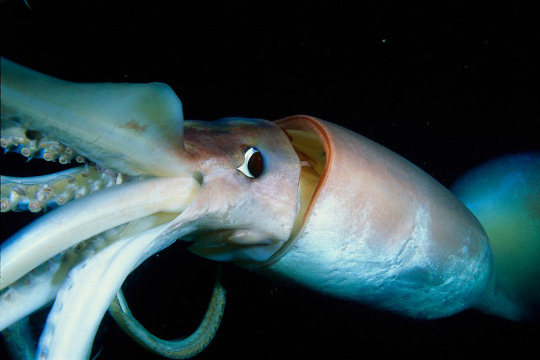


0 notes
Text
Océans, l'odyssée immersive : une exposition à découvrir en famille autour des œuvres fascinantes de Brian Skerry
Jusqu'au 7 janvier 2024, l'Atelier des Lumières à Paris propose aux spectateurs de plonger parmi les œuvres de l'Américain Brian Skerry, photographe de renom pou
0 notes
Text
Uncharismatic Fact of the Day
Tuna fish might be a tasty meal for us, but in the wild they’re the ones at the top of the food chain. Each of the 15 species of tuna fish in the genus Thunnini preys on a variety of fish, squid, and crustaceans, and are often the first ones on the scene of a feeding frenzy. Part of what makes them such good hunters is their speed; some tuna have been clocked at over 70 kph (43 mph)!

(Image: A school of Atlantic bluefin tuna (Thunnus thynnus) by Brian Skerry)
If you like what I do, consider leaving a tip or buying me a kofi!
#Scombriformes#Scombridae#bluefin tuna#true tunas#tunas#Ray-Finned Fish#bony fish#fish#uncharismatic facts
90 notes
·
View notes
